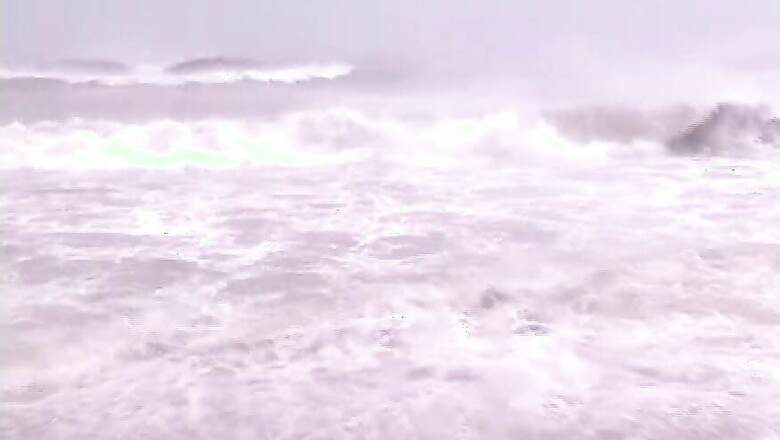
views
Geneva: An enormous 62-foot-high wave in the North Atlantic ocean has set a new world record for the highest significant wave measured by a buoy.
The wave was recorded in the North Atlantic ocean between Iceland and the UK by an automated buoy in February 2013, according to the World Meteorological Organisation.
It followed the passage of a very strong cold front, which produced winds of up to 81.11 kilometres per hour over the area.
The previous record of 18.275 meters was measured on 8 December 2007, also in the North Atlantic.
The WMO Commission for Climatologys Extremes Evaluation Committee classified it as "the highest significant wave height as measured by a buoy".
"This is the first time we have ever measured a wave of 19 metres," said WMO Assistant Secretary-General Wenjian Zhang.
"It highlights the importance of meteorological and ocean observations and forecasts to ensure the safety of the global maritime industry and to protect the lives of crew and passengers on busy shipping lanes," Zhang said.
"We need high quality and extensive ocean records to help in our understanding of weather/ocean interactions," said Zhang.
"Despite the huge strides in satellite technology, the sustained observations and data records from moored and drifting buoys and ships still play a major role in this respect," he said.
A separate record ? that of the highest significant wave height as measured by ship observation ? was measured in February 2000 in the Rockall Trough, also in the North Atlantic between the UK and Iceland.
Wave height is defined as the distance from the crest of one wave to the trough of the next.
The term "significant wave height" means the average of the highest one-third of waves measured by an instrument, and is comparable to what an observer would see as an average of about 15-20 well-formed waves over a period of about 10 minutes.
The highest waves typically occur in the North Atlantic, rather than the Southern Ocean.
Wind circulation patterns and atmospheric pressure in the North Atlantic in winter leads to intense extra-tropical storms, often so-called "bombs".
This means that the area from the Grand Banks underwater plateaus off the Canadian coast around Newfoundland to south of Iceland and to the west coast of the UK, including the Rockall Trough, are prime candidates for wave records. PTI MHN SAR MHN




















Comments
0 comment